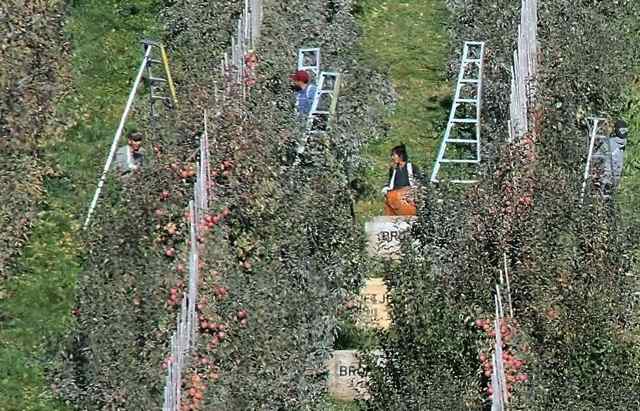forum
library
tutorial
contact

Court Takes Chlorpyrifos Chemical
Away from Farmers
by Don JenkinsCapital Press, August 20, 2018
|
the film forum library tutorial contact |

|
Court Takes Chlorpyrifos Chemical
by Don Jenkins |
Farmers and crop advisers say prohibiting the widely used insecticide chlorpyrifos will hinder the battle against pests.
 Growers may find alternatives to a widely used insecticide that a federal court says must be banned by early October, but substitutes may be less effective and more expensive, and leave fewer ways to suppress ever-evolving bugs, according to farmers and crop advisers.
Growers may find alternatives to a widely used insecticide that a federal court says must be banned by early October, but substitutes may be less effective and more expensive, and leave fewer ways to suppress ever-evolving bugs, according to farmers and crop advisers.
Farmers use chlorpyrifos on more than 50 food crops. Christmas tree farmers use it on bugs, and ranchers use it to kill horn flies. Banning the chemical won't be simple, Oregon State University entomologist Stuart Reitz said Friday.
"The reality is, yeah, you can pull out any product, any chemistry, and growers would have to adapt to that reality. But can we provide them with alternatives that work as well?" Reitz said. "I think that's something the public and regulatory agencies need to think about."
A three-judge panel of the 9th U.S. Circuit Court of Appeals ruled 2-1 on Aug. 9 that the Environmental Protection Agency must cancel all registrations for chlorpyrifos within 60 days. The EPA has yet to announce whether it will appeal or ask for a hearing by the full circuit court.
The ban stems from a petition filed in 2007 by pesticide opponents. The Obama EPA tentatively proposed a ban in 2015, but missed court deadlines to make a final decision. The Trump administration inherited a new deadline and dismissed the petition last year. The EPA, however, hasn't made a final decision on whether chlorpyrifos residue on food is safe enough to comply with the Federal Food, Drug and Cosmetic Act.
An EPA lawyer told the three judges at a hearing in July that the agency needed another year and that a ruling by the court would be premature. One judge agreed, but two decided that EPA had run out of time. Rather than set a new deadline for EPA to make a decision, Judges Jed Rakoff and Jacqueline Nguyen banned the chemical, which has been used in U.S. agriculture since 1965.
Willamette Valley seed farmers use chlorpyrifos to control cabbage root fly and garden symphylan, crop adviser Ted Hake said.
Farmers can use other chemicals, but none, including chlorpyrifos, are 100 percent effective, he said. If farmers are reduced to using one product, pests will develop resistance more rapidly, he said.
"It's a pretty big deal. We don't have a lot of other options," he said. "They've been working on new things for quite awhile. The issue is, there are only so many ways to attack a pest."
The EPA's position is that the medical science on whether chlorpyrifos causes birth defects is unresolved. The Obama administration's USDA was among the pesticide's defenders, calling it "incredibly important" to food production and challenging claims the chemical was unsafe. On its website, Earthjustice, the law firm that represented environmental and farmworker groups before the circuit court, calls chlorpyrifos "Trump's pet poison."
Washington Attorney General Bob Ferguson intervened in the lawsuit on the side of the environmental and farmworker groups. "I won't allow the administration to ignore science at the expense of Washington farmworkers and consumers," he said in a written statement after the court's ruling.
Aurora, Ore., vegetable farmer Mike Iverson estimated that applying chlorpyrifos costs him $10 to $20 an acre. An alternative chemical costs about $100 an acre, he said.
"The problem is if you do away with one of the two alternatives that work on pests, you're handicapping yourself," he said. "Having alternatives to contain all the pests we care about is important."
Related Sites:
The Facts on Chlorpyrifos by FactCheck.org
learn more on topics covered in the film
see the video
read the script
learn the songs
discussion forum
